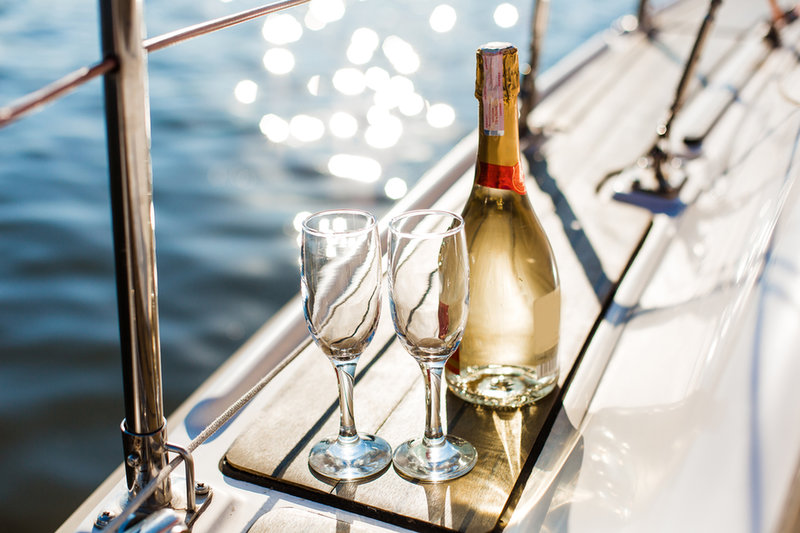cruise
Luxury cruises in a cost of living crisis: in conversation with Panache Cruises
Frances Marcellin speaks to James Cole, founder and managing director of Panache Cruises, about how recent global events are impacting luxury cruises.
Image: copyright
As the cruise industry recovers after Covid-19, it has sailed from one crisis into another as the Russian invasion of Ukraine, cost-of-living increases, and high energy prices hit consumers where it hurts - their disposable income and travel budget.
To find out how current market forces are affecting the luxury sector of the cruise industry, we spoke to James Cole, founder and managing director of Panache Cruises, which specialises in selling luxury cruises.
Cole launched luxury cruise agency Panache Cruises in 2020, almost two years after leaving mass market cruise retail company Cruise 118, which he founded in 2008. A fast-expanding business, the 40-strong team of employees work with ocean, river, expedition, and yacht-style cruise companies.
The luxury cruise market was predicted to double in size between 2018 and 2027, and Cole set up Panache Cruises because he anticipated growth in the luxury cruise market. But has the impact of the last few years’ global events strengthened or stymied its progression?

James Cole, founder and managing director of Panache Cruises
Frances Marcellin: How is the luxury cruise market faring?
James Cole: Despite the pandemic, the luxury cruise sector has grown by 120% from an annual passenger capacity of approximately 325,000 in 2012 to 720,000 passengers in 2022.
With more new small ships under construction or on order, the luxury cruise sector is projected to continue to grow to reach nearly 1.2 million passengers by 2027. To meet that demand, the industry needs to find and engage with new customers, people who haven’t tried a luxury cruise before.
My team has a proven track record of doing exactly this. Our mission is quite simple – to be the leading luxury and ultra-luxury cruise retailer in the UK.
You work across ocean, river, expedition, and yacht-style categories. How do they compare in terms of performance?
Each of these categories is very different in terms of scale and capacity. If you look at the number of available cabins across each sector – ocean or elite ocean – as we call it, will always dominate from a capacity perspective. This would be followed by luxury river cruises. A typical luxury ocean vessel might hold 700 to 1,000 passengers, whereas most luxury river vessels might only carry 150 passengers.
Expedition and yacht style or mega yacht cruises will always offer much less capacity to the market due to their smaller size. The same is also true for expedition cruise vessels, which are typically constrained by environmental operating parameters. For example, vessels operating in the Galapagos can only carry a maximum of 100 passengers. Expedition ships operating in Antarctica can only carry a maximum of 500 passengers.
All categories are performing very well. The main constraint is capacity within the expedition sector but as new ships roll down the slipways, this situation will change in the coming year or two. This is good news for people who have saved all their lives to undertake a series of ‘bucket list’ trips. This is what expedition cruising is all about.
How did the pandemic affect the luxury cruise market and why did you choose to launch then?
We have seen a shift in the priorities of travellers across the wider travel sector as people become more crowd conscious and move away from mass-market style holidays.
When translated into the cruise sector, this is driving more interest in small ship cruising due to smaller passenger numbers and the fact that small ships often offer 50% more personal space per person compared to the largest cruise ships. We are seeing that people are trying to make up for lost time and are prepared to spend more to reach the destinations they really want to visit.
Coming out of the pandemic, cruise lines needed as much help as possible to fill their ships as the sector recovered. We are now back to where we were before the pandemic and the industry is thriving once more.
Is the luxury cruise market back on track now following the pandemic?
Yes, very much so. The pandemic has boosted interest in small ship cruising due to lower passenger numbers and this is attracting more and more people to the luxury sector than ever before. This is because most luxury and ultra-vessels are a lot smaller than the mega-liners that are currently in service with much lower passenger loads.
Most luxury cruise ships operating at sea accommodate well under 1,000 people at full capacity. The largest liners are able to carry nearly 7,000 passengers by comparison.

Is the cost-of-living crisis affecting the luxury cruise market?
All those cancelled holidays during the pandemic have given a lot of people more buying power in the post-pandemic world and we are seeing more and more people switching to higher cabin grades and longer itineraries as a result.
Travel has become an essential staple of modern life and an opportunity to make lasting memories on ‘once in a lifetime’ type itineraries – if anything I would say that travel has become more important in the post-pandemic world.
Who is your target market and is the cost-of-living crisis affecting their ability to buy luxury cruises?
Our customers are certainly not the ‘mega-rich’ but they are people who value impeccable customer service, the finest cuisine, the most luxurious interiors and totally unique travel experiences.
These are people who actively seek out once-in-a-lifetime experiences for themselves and their families. As a general guideline, our passengers are over 50, retired or semi-retired, and are former professionals from a wide variety of sectors.
However, the age profile is changing. More and more younger people are being attracted to the luxury cruise sector for the first time and we expect this trend to continue. People in their 40s are now actively looking for new luxury-focused travel experiences and this will allow the sector to grow.
What will be the most popular category in 2023?
Given most of the capacity is in the Elite Ocean category, this will continue to be the most popular category in the luxury cruise sector in terms of sheer numbers.
However, we need to look at the order book for new ship builds and it is clear that more and more vessels are being built (as an overall percentage) in the river cruise, expedition and yacht-style sectors.
Interestingly, many of these new vessels will be powered by new technologies such as LNG, biofuel, hydrogen and pure electric.
How is the energy crisis affecting the luxury cruising market?
Despite the recent reprieve in fuel prices, the reality is that fossil fuel prices are likely to keep increasing. Therefore, if people are looking to cruise in 2023, 2024 or 2025, the sooner they book the better. The cost of the holiday will therefore be largely fixed from the date of booking.
Many cruise lines are now booking into 2025 so people should start thinking about booking as far ahead as possible to benefit from the lowest possible price points. In the longer term, I envisage the luxury river sector to be less influenced by the cost of fossil fuels.
We are already seeing an increasing number of hybrid and electrically-powered river cruise vessels and many more are scheduled to be launched in the coming year or two. I was greatly encouraged to read that the first hydrogen-powered vessel will start operating in March of 2023 in the California Bay area. These developments are great news for the wider cruise sector.